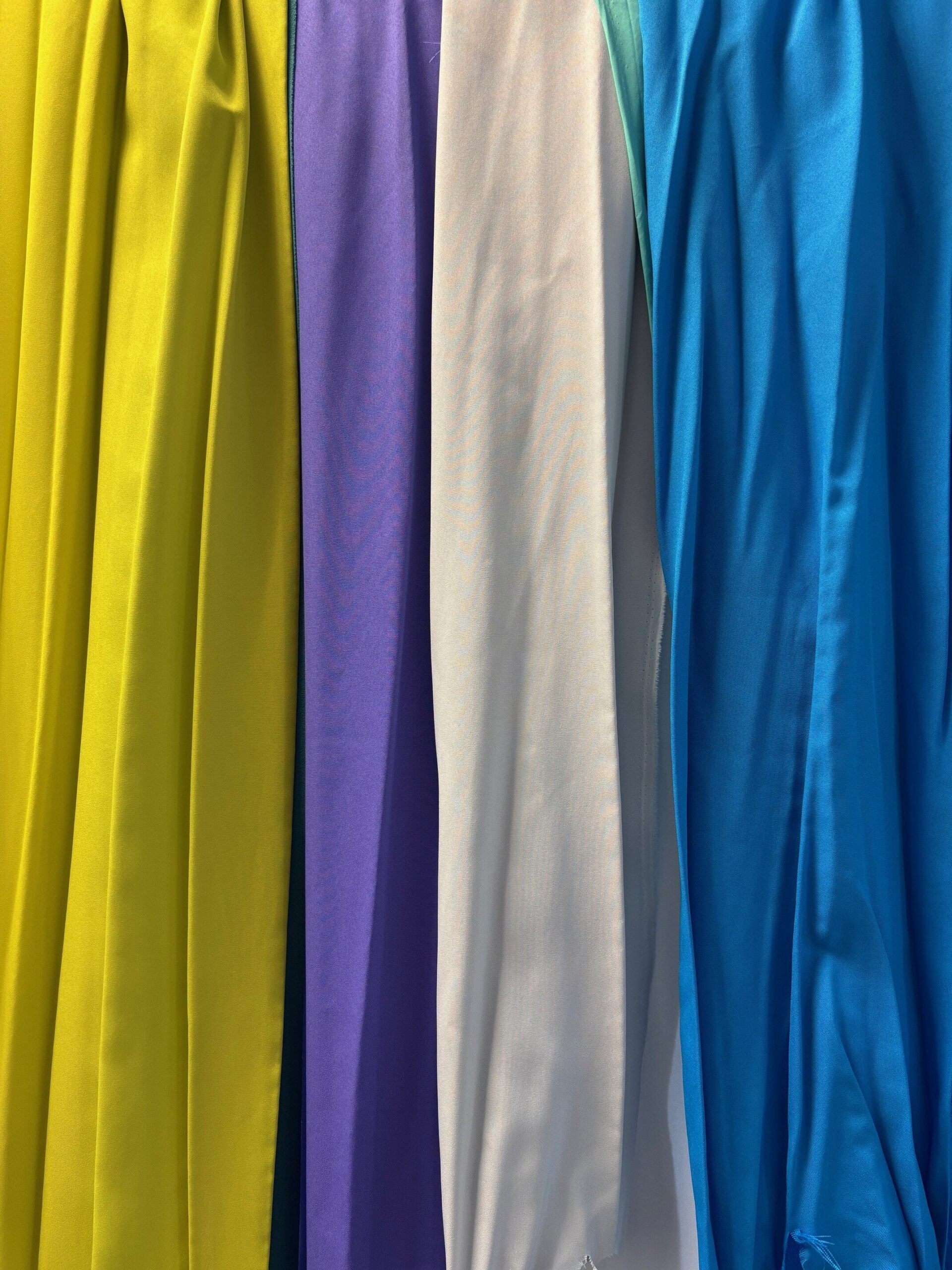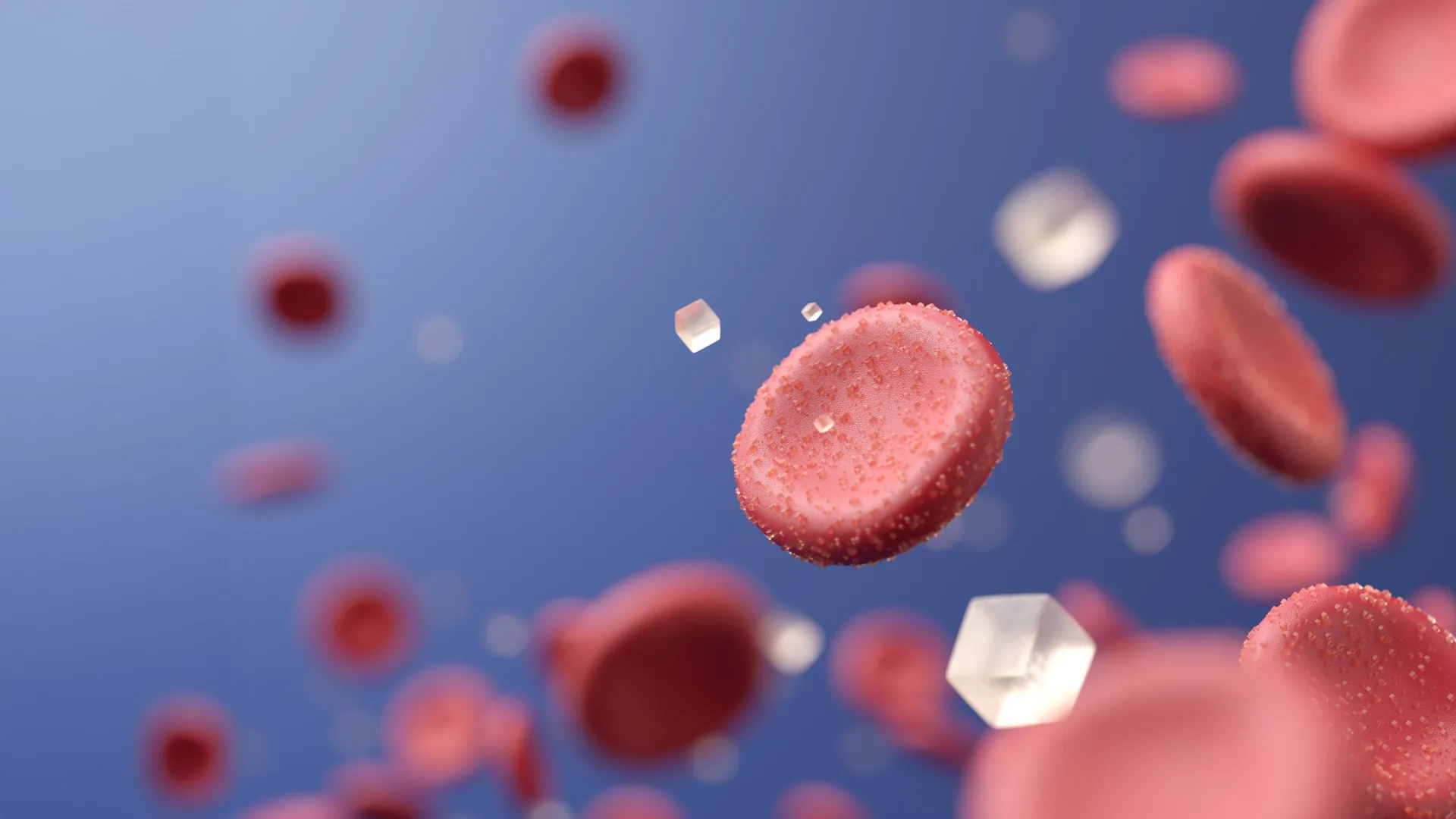
A set of hanging fabric samples, dyed in vibrant colors with SwitchDye. Credit: University of Leeds
Sparkling water was the key to making polyester dye less harmful to the environment in the creation of a new method developed by an interdisciplinary team at Leeds University spin-out company SwitchDye.
Polyester accounts for more than half of all global fiber production, with production increasing every year, but it takes centuries to break down and can be difficult to recycle from one garment to another. Textile production is estimated to be responsible for around 20% of global clean water pollution, largely due to chemicals released into dyeing wastewater.
The startup aims to address these challenges at the dyeing stage by reducing harmful chemicals, water waste and costs. This could also make it easier and safer to recycle polyester clothing, according to researchers and co-founders Dr Nathaniel Crompton, Dr Harrison Oates, Professor Richard Blackburn and Professor Chris Rayner.
The concept was invented by Professors Blackburn and Rayner, and Dr Crompton developed the SwitchDye technique as part of his PhD. project in the Faculties of Chemistry and Design. Now the startup’s chief executive, Dr Crompton, said: “SwitchDye could transform the textile industry by reducing its huge water use footprint and pollution problem.
“Not many people know that even more toxic chemicals are used to turn brightly colored sewage into clear liquids. When released into fresh water, it is a secret killer that harms people, animals and the environment.
“We can’t solve this problem without the support of industry, investors and policymakers, so we’re excited to share SwitchDye publicly as we look to grow.”
Born from an ongoing collaboration between the Leeds Schools of Design and Chemistry, SwitchDye makes it easy to insert and remove dyes from fiber by injecting a small amount of carbonated water into the dye bath. This triggers the unique switching behavior of dyes within polyester fibers.
SwitchDye, which is based in Nexus, the university’s innovation community, also works with other synthetic fibers, such as nylon and spandex, and is as effective as a widely used dye, without compromising color. It is important to note that it uses the same equipment that the manufacturers already have.
Dr. Oates, SwitchDye’s CTO, who completed his Ph.D. as part of the Priestley Center for the Climate Future, said: “Polyester is very durable and easy to recycle, however the main problem is the color of the fabric.
“SwitchDye can be more easily removed from the fiber, making clothing much more recyclable. Ultimately, SwitchDye helps make the textile industry more circular and sustainable, both at the dyeing and recycling stages.”
Dr. Crompton and Dr. Oates met while pursuing PhDs at Wolfson CO.2 Chemistry Laboratory, a unique facility for developing new carbon dioxide-based processes in the Faculty of Chemistry, where they quickly became friends and then business partners.
The world-class facilities at the University’s School of Design and Leeds Institute of Textiles and Color (LITAC) have allowed researchers to rigorously test dyes for many years, ensuring they meet or exceed industry standards for color fastness.
Chris Rayner, Professor of Organic Chemistry in the School of Chemistry, said: “Richard and I have collaborated together for almost 25 years in sustainability and green chemistry for coloration and textiles, combining our individual expertise. We are proud of how our multidisciplinary approach continues to pioneer innovative solutions to solve real-world problems.”
Richard Blackburn, Professor of Sustainable Materials at the School of Design, added: “It’s been really exciting to see how the technology has developed… our initial concept was the subject of Nat’s PhD…”
Jane Nicholson, EPSRC’s executive director of research, said: “Sustainable approaches to polyester dyeing are paving the way to a cleaner, more circular textile industry. This new venture is a great example of how EPSRC’s investment in training, specifically in sustainable chemistry, is not only developing the leaders of tomorrow, but also leading to new discoveries that drive innovation.”
Over the next six months, the team aims to close its first round of investment, scale up dye synthesis, and begin testing its dyeing process on commercial-scale machines.
Citation: Scientists have discovered a way to dye polyester using 90% less chemicals and 40% less water (2025, November 6) retrieved November 12, 2025 from https://phys.org/news/2025-11-scientists-dye-polyester-chemicals.html
This document is subject to copyright. Apart from any fair dealing for private study or research purposes, no part may be reproduced without written permission. The content is provided for informational purposes only.
#Scientists #discovered #dye #polyester #chemicals #water









